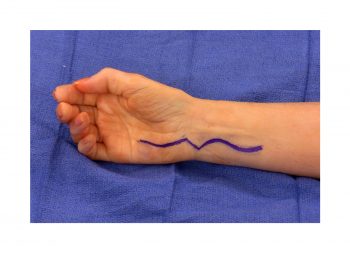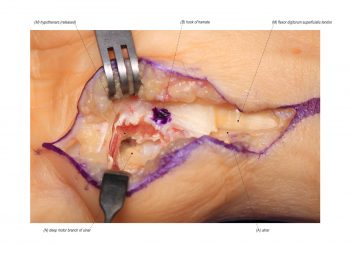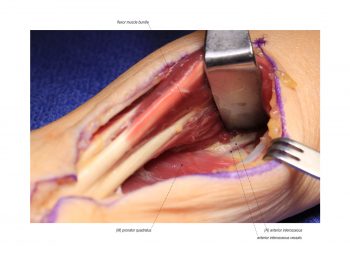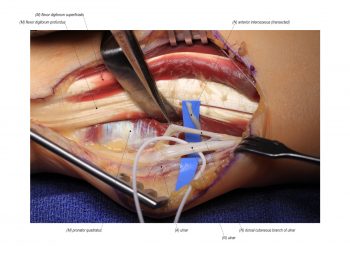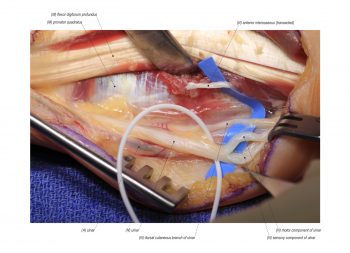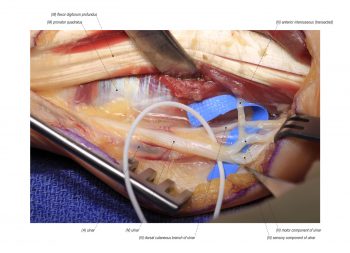The donor anterior interosseous nerve (AIN) is transferred to the side of the recipient ulnar motor fascicular group within the distal forearm to preserve ulnar nerve motor intrinsics. Guyon’s canal release is a required part and is completed prior to this procedure. Specific to this case, a revision ulnar nerve transposition was completed proximally. This procedure is a variation of the end-to-end AIN to ulnar motor nerve transfer. The extended version includes both the Guyon’s canal release and the reverse end-to-side nerve transfer.
Standard 101020
Extended 101020
POSITION
Supine.
INCISION
An incision is made ulnar to the thenar crease with a Brunner’s incision across the wrist and proximally across the distal forearm.
REFERENCES
- Kale SS, Glaus SW, Yee A, Nicoson MC, Hunter DA, Mackinnon SE, Johnson PJ. Reverse end-to-side nerve transfer: from animal model to clinical use. J Hand Surg Am. 2011 Oct;36(10):1631-1639.e2. PMID: 21872405.
- Brown JM, Yee A, Mackinnon SE. Distal median to ulnar nerve transfers to restore ulnar motor and sensory function within the hand: technical nuances. Neurosurgery. 2009 Nov;65(5):966-77; discussion 977-8. PMID: 19834412.
- Novak CB, Mackinnon SE. Distal anterior interosseous nerve transfer to the deep motor branch of the ulnar nerve for reconstruction of high ulnar nerve injuries. J Reconstr Microsurg. 2002 Aug;18(6):459-64. PMID: 12177812.
Disclosure: No authors have a financial interest in any of the products, devices, or drugs mentioned in this production or publication.
